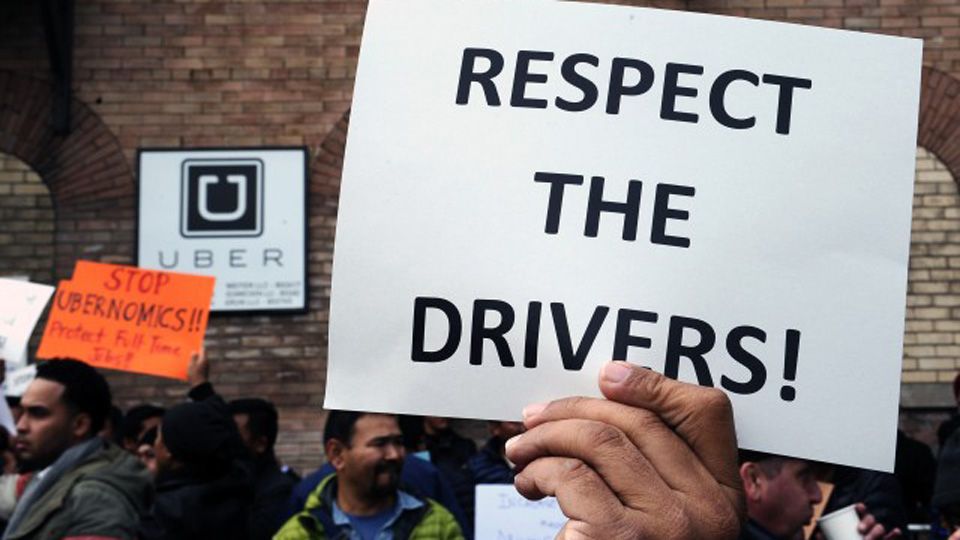
NEW YORK – Taking matters into their own hands, exploited Uber ride-service drivers in New York City decided to improve their jobs and their working conditions by organizing with the Amalgamated Transit Union.
And to make sure their campaign succeeds, ATU is lobbying the city’s Taxi and Limousine Commission to order ride-sharing firms Uber and Lyft to freely let their drivers vote on whether to unionize.
The campaign by the drivers is important: Uber and Lyft are two signature firms in the so-called “gig economy” of companies nationwide. The gigs are driven by computer “apps,” that match consumers individually with individual service providers.
But those gig firms also claim their workers, like the NYC drivers, are “independent contractors” who legally cannot be organized under U.S. labor law. And when firms employ independent contractors, they don’t have to pay workers comp, Social Security and Medicare payroll withholding taxes or unemployment insurance.
Key issues in ATU’s organizing drive include Uber’s ban on drivers making tips, its erratic scheduling and unilateral demotions of drivers. Drivers are also upset by other requirements of being “independent contractors” – such as being forced to pay for their own gas, tires and insurance – while the company still basically dictates working conditions.
As a result, the New York City Uber drivers contend they’re “employees” under labor law, who can be organized, and 14,000 of them have signed union recognition election cards with ATU to prove it. ATU Local 1181-1061, which represents many New York school bus drivers, is demanding the city commission require the ride-sharing firm to “hold an election so all New York City Uber drivers can vote for the union of their own choice.”
Uber says it employs some 48,000 drivers citywide, all as part-timers and all as independent contractors.
Union President Michael Cordiello wrote the commission that, “We make this demand in conformance with the stated mission of the TLC, the agency responsible for licensing and regulating” taxi and car services in the Big Apple.” The drivers also staged a pro-ATU rally at the taxi commission headquarters in Queens on Sept. 27.
If the city commission steps in, it has a precedent to follow: Seattle passed an ordinance last year, declaring its Uber and Lyft drivers are employees and can be organized. Due to company lawsuits, the ordinance is on hold until January. The Teamsters are organizing the Seattle drivers.
Besides the legal hurdle of whether the drivers are independent contractors or employees, ATU faces two other problems in the organizing drive, even though it achieved more than the labor law-required minimum of signed union authorization cards from 30 percent of the drivers.
One roadblock is a competing organizing drive, started last December, by the Electrical Workers, news reports said.
The other is an agreement that Uber, under pressure from public protests, signed last year with the Machinists. The pact lets that union speak for – but not organize – the drivers, for five years, unless the drivers become “employees” under labor law.
Photo: Uber drivers demonstrate against wage cuts and for a union. | Anthony Behar/AP

MOST POPULAR TODAY

Zionist organizations leading campaign to stop ceasefire resolutions in D.C. area


High Court essentially bans demonstrations, freedom of assembly in Deep South

Afghanistan’s socialist years: The promising future killed off by U.S. imperialism

Communist Karol Cariola elected president of Chile’s legislature






Comments